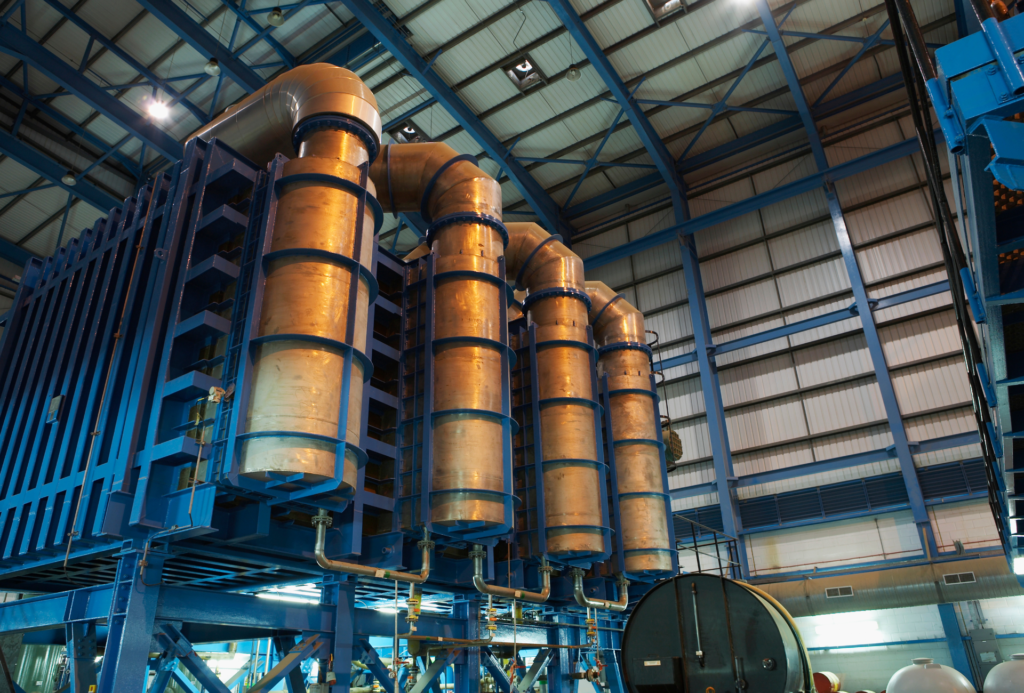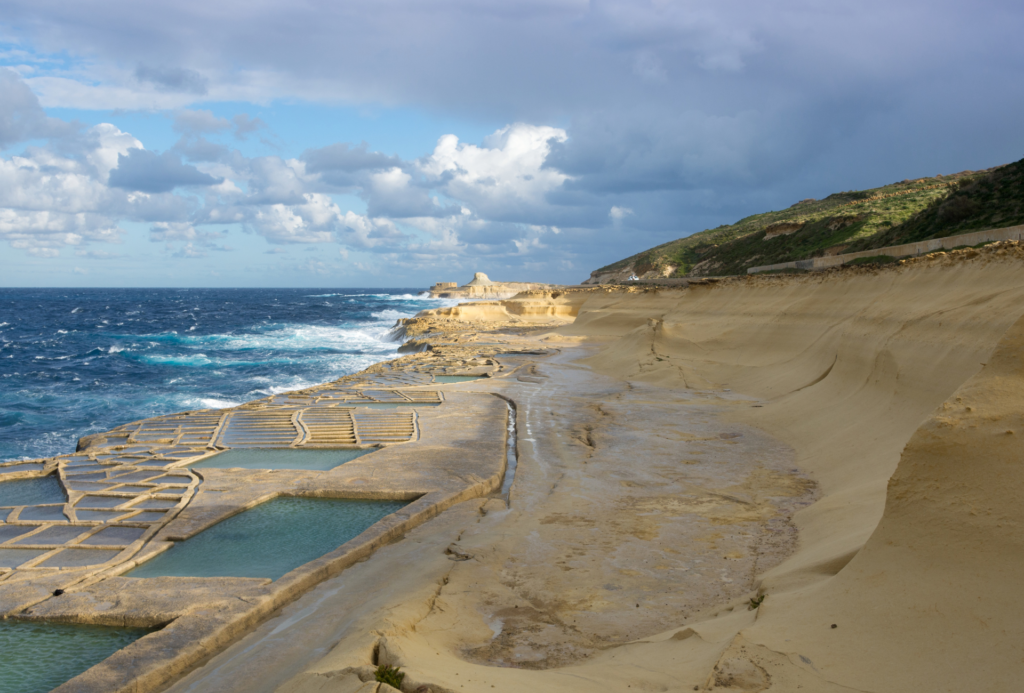
Image a world where every drop of water is not only accessible but also clean and safe to drink. That’s the future that seawater desalination plants are hoping to bring closer to reality.
As we delve deep into the exciting world of water filtration and desalination, it’s important to keep in mind that all of these techniques/technology should be run and handled by experts in the field of industrial water treatment and if you have any projects that require such experts to contact us at www.aguateam.com.
It’s critical to understand that over 97% of the Earth’s water is seawater, and only a tiny fraction of it is usable for human consumption.
The concept of desalination aims to address this disparity by removing salt and other minerals from seawater to make it safe for drinking and other industrial purposes.
We’ll be covering the use of purified seawater by the use of desalination at a later date in an article that shows how the manufacturing processes are impacted by such technology.
In this comprehensive guide, we’ll explore the benefits of installing a seawater desalination plant and the different types of seawater desalination technologies available for use today.
Not only will we examine the technical aspects of how these plants work, but we’ll also explore the environmental impact and cost-effectiveness of this innovative technology.
We understand that one of the most, if not the most important aspects of water treatment is the profitability and efficiency of the technology itself. Because of this, we’ll go into heavy detail to uncover everything about those two topics.
Finally, we’ll provide you with the information you need to choose the right type of desalination plant for your specific needs.
And by the end of this article, you’ll have a thorough understanding of the many advantages of seawater desalination, and why it’s becoming a popular solution for water-stressed communities around the world.
What is a Sea Water Desalination Plant and How Does it Work?
A seawater desalination plant is a facility that converts seawater into clean and safe drinking water through a process called “desalination”.
This process involves removing the salt and other minerals from seawater to make it usable for human consumption and other purposes.
The end result is clean, fresh drinking water that can be used to support the needs of communities, businesses, and industries.
The basic concept of a seawater desalination plant is to filter seawater through a series of filters and membranes specifically designed to remove salt and other impurities.
This filtration process can be done through various methods, including reverse osmosis, multi-stage flash distillation, and electrodialysis.
In reverse osmosis, seawater is pushed through a semi-permeable membrane that filters out salt and other impurities.
This is a highly efficient and cost-effective method of desalination and is used by many desalination plants around the world.
In multi-stage flash distillation, seawater is heated to create steam, which is then condensed to produce fresh water.
This method is less commonly used due to its high energy requirements, but it is still an effective way to produce large quantities of clean drinking water.
Electrodialysis is another method used in seawater filtration. This process uses an electric current to separate salt and other impurities from seawater, producing clean, fresh water.
Understanding the Different Types of Sea Water Desalination Technologies

The process of desalination has come a long way in recent years, with a variety of different technologies available to choose from.
Understanding the different types of seawater desalination technologies is essential for choosing the right one for your specific needs.
Here, we’ll explore some of the most commonly used methods, including reverse osmosis desalination, thermal desalination, membrane filtration, and electrodialysis.
Reverse osmosis desalination is one of the most widely used methods of seawater filtration. It works by applying pressure to seawater, which forces it through a semi-permeable membrane.
This membrane filters out salt and other impurities, producing clean, fresh water.
This method is highly efficient, cost-effective, and environmentally friendly, making it a popular choice for many desalination plants.
Thermal desalination involves heating seawater to create steam, which is then condensed to produce clean drinking water.
This method is less commonly used due to its high energy requirements, but it is still an effective way to produce large quantities of clean drinking water.
Membrane filtration is another method of desalination that works by filtering seawater through a series of membranes specifically designed to remove salt and other impurities.
This method is highly efficient and cost-effective, making it a popular choice for many desalination plants.
Electrodialysis is a less commonly used method of desalination that uses an electric current to separate salt and other impurities from seawater.
Benefits of Installing a Sea Water Desalination Plant

Installing a seawater desalination plant may bring about its own challenges but carries with it a number of incredible benefits.
These include:
- Water conservation
- Reduction of carbon footprint
- Providing access to clean drinking water at an industrial level
These benefits make desalination plants a great investment for communities, businesses, and industries looking to address water scarcity and access to clean drinking water.
Now let’s go into detail on each of these benefits.
One of the most significant benefits of installing a seawater desalination plant is the water conservation benefits it provides.
Desalination plants produce clean drinking water from seawater, reducing the need to extract freshwater from rivers, lakes, and other sources.
This helps to conserve these precious resources, preserving them for future generations.
Another benefit of installing a seawater desalination plant is that it can help to reduce a community’s carbon footprint.
Traditional methods of water treatment and filtration can require a significant amount of energy and resources, making them a significant contributor to a community’s carbon footprint.
However, many desalination plants use environmentally friendly methods of filtration, such as reverse osmosis, which reduce their impact on the environment.
Perhaps the most important benefit of installing a seawater desalination plant is that it provides access to clean drinking water.
In many parts of the world, access to clean drinking water is a major issue, with many communities facing water scarcity and limited access to clean drinking water.
Desalination plants provide a solution to this problem, producing clean, safe drinking water from seawater.
The Future of Sea Water Desalination Plants & How it is Revolutionizing the World’s Access to Clean Drinking Water
The future of seawater desalination plants is bright, with advancements in technology leading to more efficient and environmentally friendly methods of filtration.
As the world continues to grapple with water scarcity and access to clean drinking water, desalination plants play an increasingly important role in providing access to clean drinking water.
One of the ways that the future of seawater desalination plants is being revolutionized is through the integration of renewable energy sources.
As the world shifts towards a greener future, many desalination plants are now powered by renewable energy sources, such as solar and wind power, reducing their impact on the environment.
This integration of renewable energy sources is helping to make desalination plants more environmentally friendly, while also reducing the cost of producing clean drinking water.
Another way that the future of seawater desalination plants is being revolutionized is through the integration of green technology.
Advances in filtration methods, such as reverse osmosis and membrane filtration, are making desalination plants more efficient and environmentally friendly.
Additionally, new methods of treating and recycling wastewater are helping to reduce the environmental impact of desalination plants.
How to Choose the Right Type of Desalination Plant
When it comes to choosing the right type of desalination plant, there are several factors to consider.
Whether you’re looking for a solution for your community, business, or industry, finding the right type of desalination plant is critical to ensuring the success and sustainability of your project.
One of the first factors to consider when choosing the right type of desalination plant is the technology provider.
The technology provider will be responsible for the design, construction, and maintenance of the plant, so it’s important to choose a provider with a track record of success and experience in the field.
Agua Team is a leading technology provider of seawater desalination plants, offering a range of solutions to meet the needs of communities, businesses, and industries.
Another factor to consider when choosing the right type of desalination plant is the type of filtration technology used.
Different types of desalination plants use different methods of filtration, including reverse osmosis, thermal desalination, and membrane filtration. It’s important to understand the pros and cons of each type of filtration technology and choose the type that best meets your needs.
The cost of the desalination plant is also an important factor to consider.
Desalination plants can be expensive to build and operate, so it’s important to have a clear understanding of the costs involved and ensure that you have the financial resources necessary to fund the project.
Finally, it’s important to consider the location of the desalination plant. The location of the plant will have an impact on its ability to provide clean drinking water, as well as its environmental impact.
It’s important to choose a location that is close to the source of seawater, while also considering factors such as water quality, availability of renewable energy sources, and proximity to populated areas.




